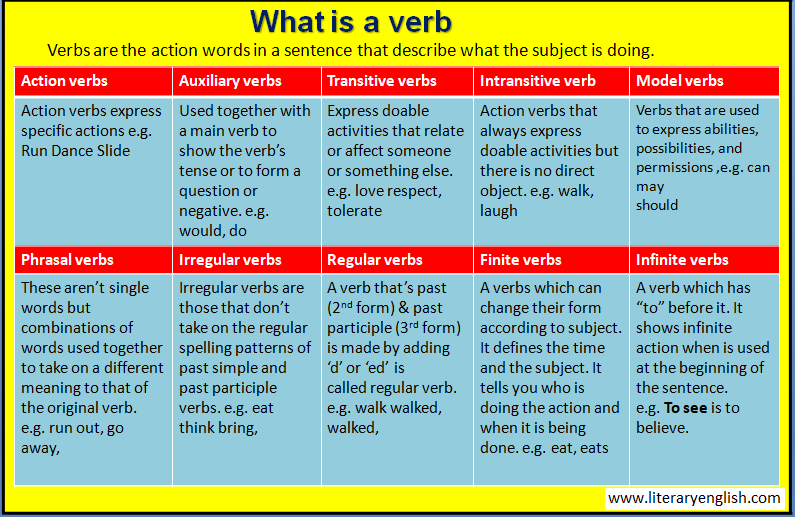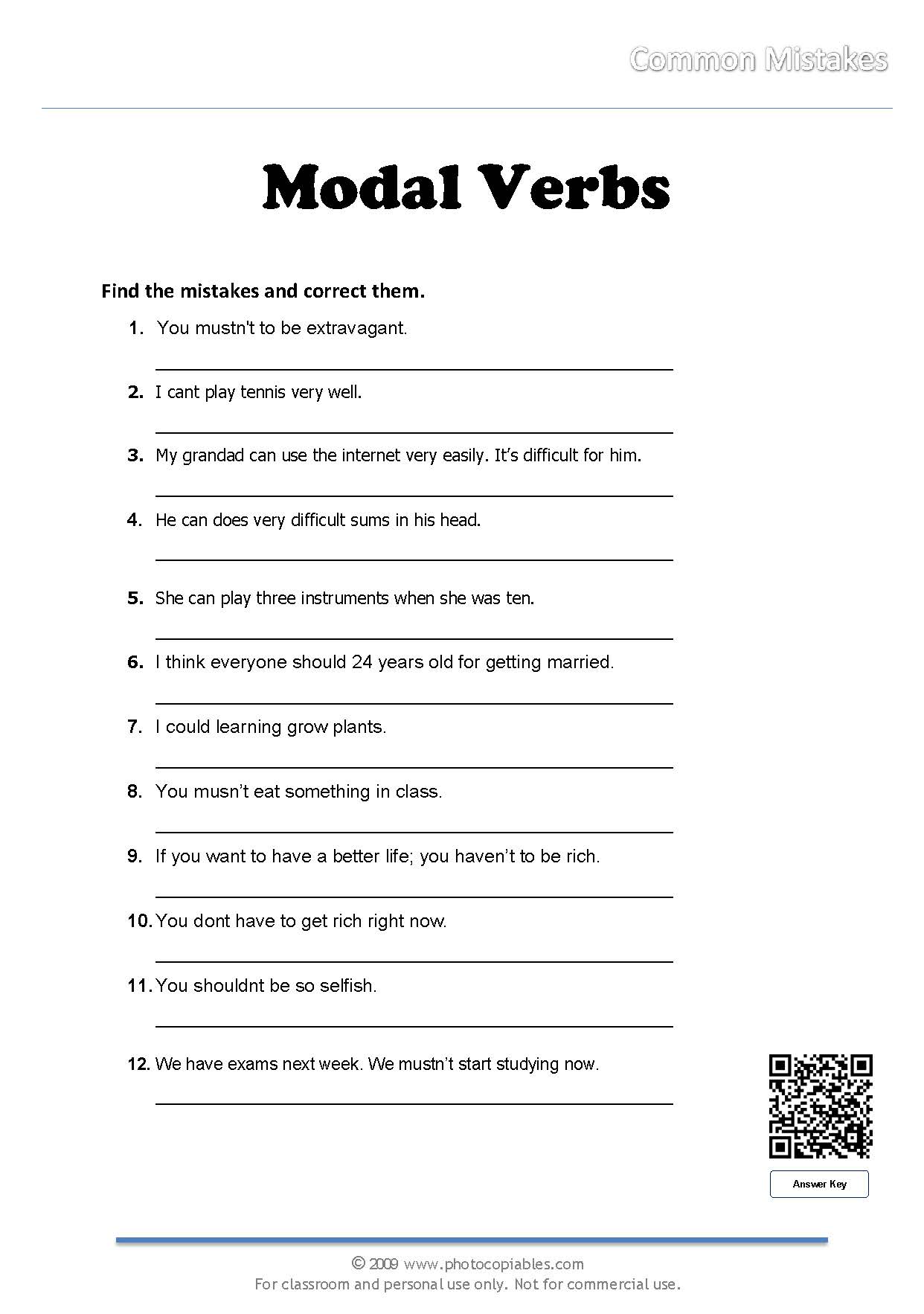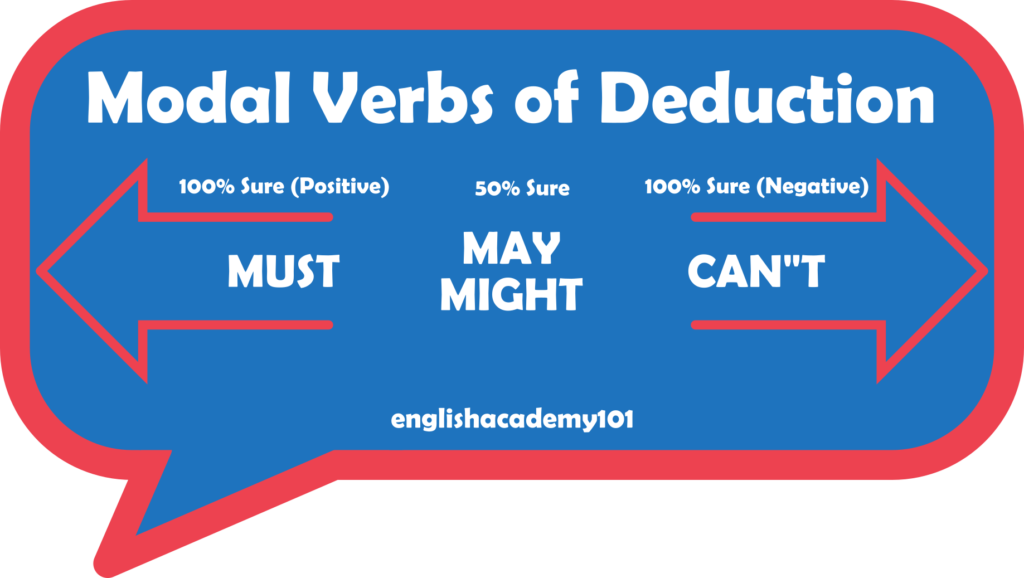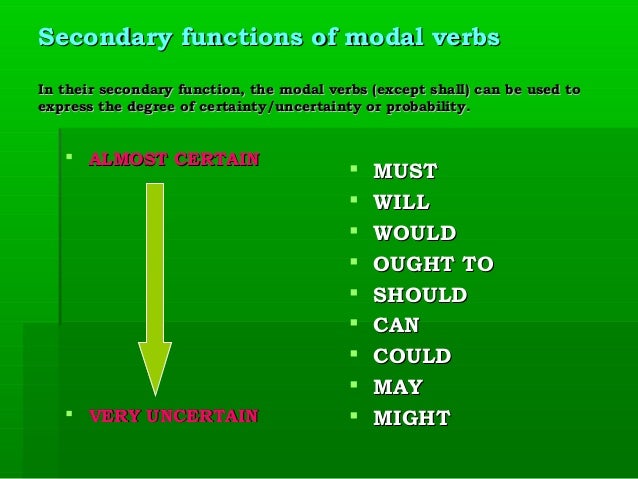Have to and have got to break all of the rules that pure modal auxiliary verbs follow. They consist of more than one word, they use infinitive forms of the main verbs, the auxiliary verb do is used for negatives and questions , and they conjugate for the third-person singular. Despite all of these differences, these semi-modal auxiliary verbs have several modal meanings.
Modal auxiliary verbs, also commonly referred to as modal verbs or modals, are used to shift the meaning of the main verb in a clause. These shifts include expressing possibility, ability, permission, obligation, or future intention. Students can find these confusing because one modal auxiliary verb can have multiple meanings depending on the context. In this context, we expect that probability modal verbs entailing tentativeness will occur more frequently in introductions and necessity modals should appear more frequently in conclusions. Research on the use of modal verbs in these two sections of the research article has been conducted using corpus tools for text retrieval and analysis.
Variation ratios will be evaluated using a log-likelihood test to determine the significance of variation according to whether specific modal meanings appear in the introductions or the conclusions. Our main research questions are 'How does the use of modal verbs vary in the introduction and conclusion sections of scientific tourism research articles in terms of form and meaning? ' and 'How does the use of modal verbs vary in the introduction and conclusion sections of scientific tourism research articles in terms of the functions they fulfil? Being a type of auxiliary verb, the modal verb is mainly used when speakers tend to express moods or attitudes (Ivanovska, 2014; Palmer, 1990; Sinclair, 1990).
To be specific, Imre pointed out that modal verb express a variety of meanings, such as "possibility, necessity, politeness, etc" (p. 126). Furthermore, Ivanovska added that modal verbs convey the meanings as "probability, permission, volition and obligation" (p. 1093). For instance, the modal verb can in It can be good indicated the speaker's attitude of agreement. In addition, it is noted that modal verbs could produce a particular effect, such as giving an instruction or making a request . For example, can in You can park the car here functions as an instruction. Like other auxiliary verbs, modal verbs work together with a main verb to give a different meaning to a sentence/clause than if the main verb was used by itself.
Modal verbs or modal auxiliary verbs are a type of verbs that indicates modality, i.e., likelihood, permission, ability and obligation. Some of the common modal verbs are can, could, may, might and must. The semi-modal auxiliary verb ought to ends in to, which makes the main verb an infinitive. This differs from pure-modal auxiliary verbs, which use the bare infinitive, the infinitive without to, for the main verb.
The meaning of ought to is nearly the same as should in all cases. When forming questions or negatives, should is more commonly used than ought to. Modal auxiliary verbs are used to show a necessity, capability, willingness, or possibility. Unlike most verbs, there is only one form of these verbs. Typically, verb forms change to indicate whether the sentence's structure is singular or plural. Most verbs also indicate whether something happened in the past, present, or future.
This is not the case with most modal auxiliary verbs, which makes them simpler to understand and use correctly. Research has been conducted using corpus tools to obtain evidence from our sub-corpus of introductions and conclusions, as mentioned earlier. Direct visual inspection of the texts has also been vital to identify the meaning of the modal verbs in context.
The fundamental role of the context in specifying the sense a particular modal verb entails has been mentioned in the literature (see Huschová, 2015; Alonso-Almeida, 2015a and the references therein). A modal verb may indicate an array of meanings, and therefore without these contextual cues, it would be unreasonable to expect an accurate categorisation of these verbal forms. The plasticity of modal verbs makes them unique; however, it also challenges our ability to identify the meanings they involve each time.
In addition to these senses of modal verbs, there is another aspect that cannot be achieved through an automatic interrogation of a computerised corpora, and this is the function these verbs fulfil in the texts in which they appear. I share Coates's view that it is not felicitous to use the label of 'deontic necessity' to identify a meaning type. While sentences with modals differ in terms of their illocutionary force, the type of speech act in itself does not seem sufficient to posit a separate category of modal meaning. There is also a separate section on the Modal Auxiliaries, which divides these verbs into their various meanings of necessity, advice, ability, expectation, permission, possibility, etc., and provides sample sentences in various tenses. See the section on Conditional Verb Forms for help with the modal auxiliary would.
The shades of meaning among modal auxiliaries are multifarious and complex. Most English-as-a-Second-Language textbooks will contain at least one chapter on their usage. For more advanced students, A University Grammar of English, by Randolph Quirk and Sidney Greenbaum, contains an excellent, extensive analysis of modal auxiliaries. The present study examines modal verb meanings and variation in these verbs in a corpus of texts in the field of tourism. We use a compilation of article introductions and conclusions written in English and published in leading journals specialised in tourism studies.
Modal verbs are important to evince the authors' stance concerning the propositional content (Biber, Johansson, Leech, Conrad & Finegan, 1999; Palmer, 2001). Variation ratios will be evaluated using a log-likelihood test to determine differences in significance between occurrences in introductions and conclusions. Our conclusions will report, therefore, on the forms, meanings and functions of modal verbs in the sections analysed. Last but not the least, when the teaching context changes where the learners are intermediate or higher learners, the use of grammar used in different context will be explained to the students. As Ivanovska mentioned that the students' task is to manipulate the modal verbs in particular context since "the meaning depends upon the context in which the auxiliary is used" (p. 1099).
Batstone defined this approach as a process of teaching which refers to the approach that engages learners in language use. In other words, teaching grammar should not only introduce the forms but also teach how to use accurately, meaningfully, and appropriately in different context. This approach aims at concentrating learners' attention on meanings in context. As Thornbury sated, "if learners are going to be able to make sense of grammar, they will need to be exposed to it in its contexts of use" (p. 72). Epistemic modality occurs more frequently in the introductions of engineering texts and less frequently in the corpus of tourism and linguistics respectively.
Deontic modality is used more frequently in the linguistics and engineering introductions in this order and used less frequently in tourism introductions. Dynamic is the second most frequent modal meaning and it is the most common in the corpus of tourism research articles. Deontic meaning is the third most frequent modal meaning, and this type also occurs more frequently in the corpus of tourism.
As shown in Figure 4, dynamic modality is the most common modal device in the texts in both the introductions and the conclusions. In the case of the latter, the number of dynamic modals exceeds the number of other modal meanings in the conclusions and introductions. Epistemic modals appear in the second position, with more cases registered in conclusions. The use of deontic modality is very common in the conclusion sections, with only a few more cases than the epistemic devices.
In the introductions, deontic modality is not a recurrent element. We shall comment on each modal type in the order of frequency. In this description, we use statistics based on the LL calculation of variation. The LL ratio works quite well for evaluating variation in small textual compilations, as in the case of our corpus of introductions and conclusions of research papers. A small group of auxiliary verbs, called the modal verbs are only used in combination with ordinary verbs.
A modal verb changes the other verb's meaning to something different from simple fact. Modals may express permission, ability, prediction, possibility, or necessity. The verbs/expressions dare, ought to, had better, and need not behave like modal auxiliaries to a large extent, although they are not productive in the role to the same extent as those listed here. Furthermore, there are numerous other verbs that can be viewed as modal verbs insofar as they clearly express modality in the same way that the verbs in this list do, e.g. appear, have to, seem etc. In the strict sense, though, these other verbs do not qualify as modal verbs in English because they do not allow subject-auxiliary inversion, nor do they allow negation with not. If, however, one defines modal verb entirely in terms of meaning contribution, then these other verbs would also be modals and so the list here would have to be greatly expanded.
The modal verbs in English grammar are can, could, may, might, must, need not, shall/will, should/ought to. They express things like ability, permission, possibility, obligation etc. They do not take -s in the simple present and they do not have a past simple or past participle form. However, some modal verbs have alternative forms that allow us to express the same ideas in different tenses. Finally, deontic modals appear to match exactly the goals of the introduction, namely a programmatic function, and those of the conclusion sections, namely a recapitulation function. In the case of the former, deontic modals represent meanings concerning promises of action in the paper and the expression of expectation arising from the revision of earlier literature on the topic.
Along with dynamic modality, the pragmatic function of deontic modality seems to be the indication of authority, and therefore this type of modality may have a persuasive effect on readers. In all these cases, the modal verbs 'can', 'must' and 'should' report on the desirability of the actions described in the propositional contents of the statements in which these verbs appear. The idea of improvement, as in above, remains strong in the use of these modal verbs in all these examples. These verbs indicate that it is essential for local tourism representatives of agents to take some actions to boost economic areas of tourist interest, which means that P done by A 'is better than' ¬P by A.
It seems clear, therefore, that the pragmatic motivation of deontic modals results from a desire to suggest authority as this notion is strongly connected with credibility in science. Semi-modal auxiliary verbs like ought to, had better, have to, be able to, used to, and be supposed to can have modal meanings, but they don't follow the same rules as pure modal auxiliary verbs. When used with the main verb, modal verbs do not end with -s for the third-person singular. Modal auxiliary verbs never change form, but they have a different form for past tense. Dynamic modality appears to occur more frequently in the conclusions of tourism research articles, as shown in Figure 4 above.
The LL ratios in Table 2 indicate that the forms 'can', 'could' and 'will' are more likely to occur in conclusions. The modal 'may', however, appears more frequently in the introductions analysed. From a pragmatic perspective, the use of more dynamic modals in conclusions may have a strengthening effect in communication as this modal meaning indicates factuality, and this information may be presented as a conclusion in this way. There is, however, an intention to mitigate the illocutionary force of the propositional content by using this modal type as facts rely on potentialities and abilities, which may eventually not show. This modal verb presents factual information, avoids blatant imposition of perspective, and prevents potential face-threatening acts (Brown & Levinson, 1987). We have used a compilation of article introductions and conclusions written in English and published in leading journals specialised in tourism.
These sections have been selected as they constitute two specific moments in the production of the paper. The introduction seems to have the clear function of assisting readers to read the article through the presentation of intentions, objectives and tentative conclusions. The conclusion seeks to summarise the strengths of the paper with clear answers to the research questions presented in the introduction.
This means that the viewpoints in the two sections must be different. The introduction, for instance, has a programmatic perspective with a focus on knowledge and expectations, and the conclusion may present more examples of authoritative voice after the analysis of the evidence than the introduction. In English, the modal verbs are used to express ability, possibility, permission or obligation. Each one of the modal verbs can be used to express one or more of these modalities. They can also be used to form the future tense in English and to make conditional sentences. Remember that modal verbs are auxiliary verbs, or helping verbs, that are most commonly used to talk about possibility or necessity.
You can also use modal verbs to ask for and give permission, describe ability, and give advice. In English, main verbs but not modal verbs always require the auxiliary verb do to form negations and questions, and do can be used with main verbs to form emphatic affirmative statements. (Neither negations nor questions in early modern English used to require do.) Since modal verbs are auxiliary verbs as is do, in questions and negations they appear in the word order the same as do. Thornbury put forward that "rules of use heavily depend on contextual factors" (p. 12). For example, Sue can come could be understood differently in different contexts. In this example, the underlying meaning of can is possibility.
However, when interpreting can from the speaker's view, it indicates that the speaker allows Sue to come, which is a kind of permission. Meanwhile, from the listener's view, it can be comprehended as Sue is free on the day or Sue's leg is better, and she is able to walk again. As Lewis concludes, "the modal verbs always express the speaker's (or listener's) judgment or opinion at the moment of speaking". In this respect, in order to better understand the meaning of modal verbs, learners should take the specific context into consideration. Since modal auxiliary verbs do not have a past tense form, we can use the modal auxiliary along with the word 'have' and a past participle.
Past participles typically end in -d, -ed, -n, or -en, creating the past tense 'wished, looked, taken,' and so forth. We have been particularly interested in the use of modal verbs in introductions and conclusions. In addition, in line with our main objective, we have identified variation in the use of modal verbs in introductions and conclusions of tourism research articles. Deontic modality is the least frequent of the three modality types. In the texts, deontic modality is realised by the modal verbs 'will', 'can' and 'would', and this deontic modal appears in the introductions and the conclusions of our corpus. In Gotti and Dossena's definition, there is the difference between modality and mood, the latter being of a morphosyntactic nature and reflecting aspects of the reality referred to in the proposition.
An example would be the use of the imperative to express a command as opposed to the use of the subjunctive to indicate hypotheses regarding the possible realisation of the action described. In addition to the mode, other linguistic elements communicate modality as the modal verbs and some clitics, as highlighted by Palmer . In short, modality can manifest itself both morphologically and with lexical mechanisms. The case of modal verbs, as affirmed by Aikhenvald , is considered halfway between the grammar and the lexicon. Modal verbs show possibility, intent, ability, or necessity.
Because they're a type of auxiliary verb , they're used together with the main verb of the sentence. A modal verb is an auxiliary verb that expresses necessity or possibility. An auxiliary verb, also called a helping verb, "helps" other verbs show moods and tenses. The English modal verbs are a subset of the English auxiliary verbs used mostly to express modality (properties such as possibility, obligation, etc.).
They can be distinguished from other verbs by their defectiveness and by their neutralization (that they do not take the ending -s in the third-person singular). Had better is a two-word semi-modal auxiliary verb that has the same characteristics as pure modal auxiliary verbs. Many sources and student textbooks do not differentiate between pure modal auxiliary verbs and semi-modal auxiliary verbs, and others separate them completely. This article mainly investigates on aspect of English grammar, modal verbs, which can be problematic for EFL learners in the Chinese teaching context. The difficulties in language learning and teaching, and rationales why modal verbs are tough to learn are examined. Then the two teaching approaches are examined, teaching the grammar works and contexts of use, which should be focused differently according to learners' level of proficiency.
The research on varying the relative complexity of teaching forms or language use needs to be further discussed in the future research. In Chinese grammar, the negative word is put before the modal verbs. Reliance on prior L1 knowledge, learners might put "not" in front of "could" and the sentence above could be incorrectly structured as He not could be over fifty. This indicates that L1 could interfere with L2 learning.
As Ellis , and Larsen-Freeman and Long noted that the learner's L1 affects the other language levels. This finding is in line with Nazarova, Yarmakeev, Pimenova, Abdrafikova and Tregubove's statement that learners have difficulties in learning and using modal verbs because of the complexity of syntactical form of modals. Language tutors understand that modal verbs often pose challenges for learners of English due to their many functions, meanings and grammatical rules. Once you've completed this short reader, you may wish to then unlock our beginner, intermediate and advanced worksheets to check your ability and understanding.






















No comments:
Post a Comment
Note: Only a member of this blog may post a comment.